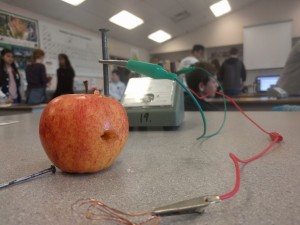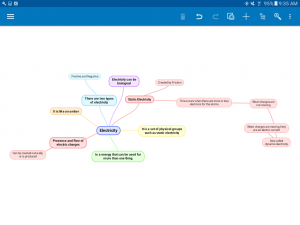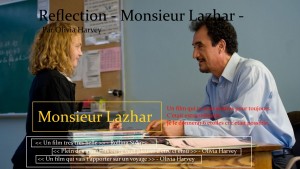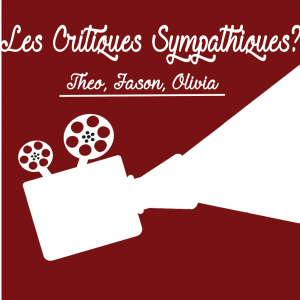My prediction:
I think that the grape will produce the most electric voltage, because grapes are acidic, so I think this factor will help add to the electric voltage, where as apples, are much less acidic than grapes.
““““““““““““““““““““““““““““““““““““““““““““““
Our Results:
Our results where that the grape was more successful creating a higher electric voltage than the apples. This may be because of the higher acidic level in grapes than in apples – like I mentioned in my prediction – giving off a higher electric voltage, helping to give more power. This is because, the charged particles from the acids, are the same as the charged ones in the electric current. So, this would be producing more electric current, this will make the battery more charged, while being more acidic at the same time.
So, we observed in this experiment, that the more acidic the fruit (the higher the pH levels) the more charged the battery will become. We also observed that different types of apples can have different electric voltages, because each different type or apples acidic levels (and pH levels) are slightly different than each other, and this affected the apples results. Where as we only had one grape, but did notice the different of the acidic levels of the three fruits.
“““““““““““““““““““““““““““““““““““““““““““““““
Q: What type of circuit will produce electron flow in your fruit or vegtable?
A: Since, electrons do physically move when voltage is applied, – because, they are charge carriers to be used to transmit electromotive force (the electric voltage) – they flow in a circuit, because the circuit has positive and negative charges (shown in the coloumb), the electrons float freely around the circuit from one atom to another.
Q: How can I use this in my everyday life?
A: Some batteries are acidic, (a car battery), while the more commonly used ones for every day life (AA, AAA, D), are Alkaline. While these batteries are different (chemistry’s), you could technically use the zinc and copper battery (like we did in class), make create a battery if you desperately needed one – and if you had A LOT of fruit with you -.
Q: How can we modify our experiment to improve our results?
A: When we do this experiment, to really get an accurate idea of the differences, a good thing to look at, is the different pH levels between the fruits and the vegetables (acid levels). We could use fruit with a pH meter, and repeat our experiment three times to get the best general result we can. And then, we could test the electric voltage on each, to get the best results and really get a good idea of which fruit or vegetable has the highest pH levels (and acid levels), to conclude which fruit or vegetables will create the most electric voltage.





